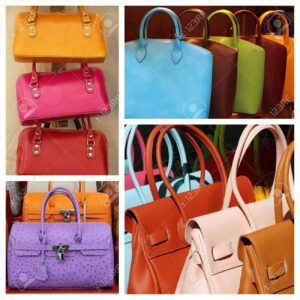Generation Z a Start of New Era: Streetwear a New Treat

Streetwear culture has evolved significantly over the years, blending elements from various subcultures, music genres, and fashion trends. Every teens are mixed with this hype. No wonder this culture could have made a start.
Here’s an overview of its development:
1970s: The Roots
- Origins in Skateboarding and Hip-Hop: Streetwear culture began in the late 1970s, rooted in the skateboarding and hip-hop scenes of California and New York. Brands like Vans and Converse became popular among skateboarders, while early hip-hop artists influenced urban fashion.
- DIY Ethos: The DIY ethos of punk also influenced early streetwear, with individuals customizing their own clothing.
1980s: Emergence of Key Brands
- Surf and Skate Brands: Brands like Stüssy, founded by Shawn Stüssy in the early 1980s, merged surf culture with street style, creating a new aesthetic. Other skate brands like Vision Street Wear and Santa Cruz gained popularity.
- Hip-Hop Influence: Hip-hop artists started to define street style, with brands like Adidas and Nike becoming integral to the look, largely due to endorsements from rap groups like Run-D.M.C.
1990s: Mainstream Recognition
- Rise of Streetwear Labels: The 1990s saw the rise of brands like Supreme (founded in 1994), A Bathing Ape (BAPE) by Nigo in Japan, and FUBU. These brands focused on limited-edition drops, creating a sense of exclusivity.
- Cross-Cultural Influence: The blending of hip-hop, skateboarding, and Japanese street fashion began to shape a more global streetwear culture.
- Sneaker Culture: Sneakers became a significant part of streetwear, with collaborations between brands and hip-hop artists or athletes driving demand.
2000s: Global Expansion and High Fashion Integration
- High Fashion Meets Streetwear: The 2000s marked the beginning of high fashion brands recognizing and integrating streetwear. Designers like Marc Jacobs collaborated with streetwear brands (e.g., his work with Stüssy), and streetwear aesthetics started appearing on high fashion runways.
- Celebrity Endorsements: Celebrities and musicians like Pharrell Williams and Kanye West launched their own streetwear lines, further merging the music and fashion industries.
- Internet and Social Media: The rise of the internet and social media platforms like MySpace and later Instagram helped streetwear gain global visibility and accessibility.
2010s: Dominance and Luxury Collaborations
- Hype Culture: The concept of “hype” became central, with brands like Supreme mastering the art of limited drops and creating massive demand. The resale market for streetwear items exploded.
- Luxury Collaborations: High fashion and luxury brands increasingly collaborated with streetwear labels. Notable examples include Louis Vuitton’s collaboration with Supreme and Gucci’s partnership with Dapper Dan.
- Diversity and Inclusion: Streetwear began to embrace more diverse and inclusive representations, reflecting its global audience.
2020s: Continued Evolution and Sustainability
- Sustainability: As environmental concerns grew, some streetwear brands started focusing on sustainability, using eco-friendly materials and ethical production practices.
- Technology and Innovation: Advances in technology and digital platforms continue to influence streetwear, with brands exploring virtual fashion, NFTs, and augmented reality experiences.
- Cultural Influence: Streetwear remains a powerful cultural force, influencing mainstream fashion, music, and even politics. The blending of gender-neutral and versatile designs reflects broader societal shifts.
Key Elements of Streetwear Culture
- Limited Editions: Streetwear thrives on exclusivity, with limited-edition drops creating high demand and a thriving resale market.
- Brand Loyalty: Strong brand identities and loyal followings are central to streetwear culture.
- DIY and Customization: The DIY spirit remains, with customization and personal expression being key aspects.
- Community and Lifestyle: Streetwear is more than just clothing; it’s a lifestyle and community centered around shared interests in music, art, and urban culture.
The evolution of streetwear culture highlights its dynamic nature and its ability to adapt and influence broader fashion trends.
Summary

Article Name
Generation Z a Start of New Era: Streetwear a New Treat
DescriptionStreetwear culture has evolved significantly over the years, blending elements from various subcultures, music genres, and fashion trends. Every teens are mixed with this hype. No wonder this culture could have made a start.
Author
Sulagna Chakraborty
Publisher Name
Blogolu
Publisher Logo








